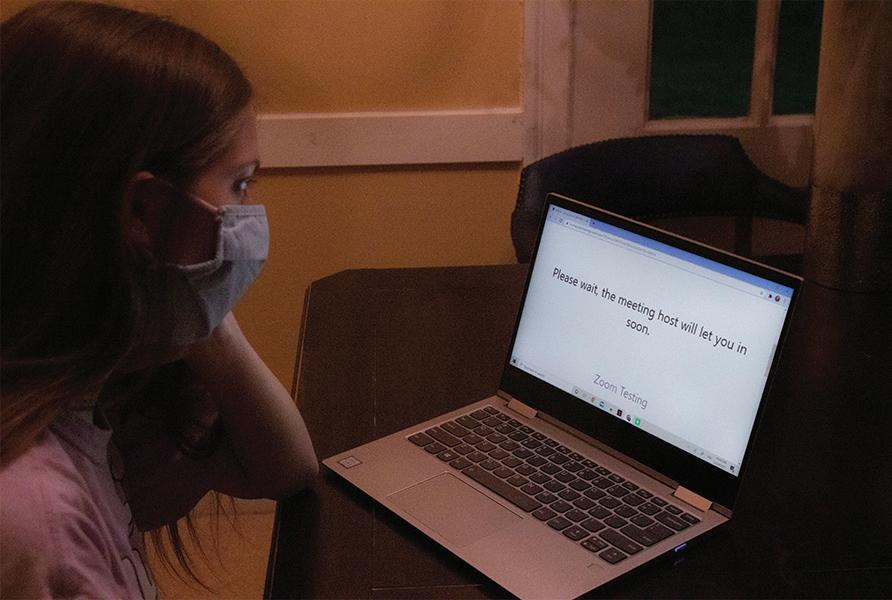
8 minute read
Gwen Klinkey
BY GWEN KLINKEY
Women
Advertisement
have never
been accepted in the video
gaming industry, but change is in the air. How
can we, as Millikin students
and supportive friends, encourage that necessary change?
It’s Christmas morning and my sister and I are huddled around the tree in our matching pajamas waiting to tear into the presents. On the count of three, we begin unwrapping, a video camera in my mother’s hand. I finally uncover it, my first gaming device: a pink DS Lite. Although this seems like a fun, but ultimately insignificant, gift, my DS led me down a road that brought me here—sitting in my room, writing this article, and trying very hard to ignore the Xbox that sits nearby.
While gaming has always brought me joy, I can’t ignore the problems that run rampant in both the games themselves and the culture surrounding them. Both before and after the Gamergate scandal of 2014—where gamers around the world harassed and doxed several female developers and writers—sexism has been a huge issue in the gaming industry.
One of the most apparent issues is the sexualization of women. Most games with a mature rating have earned that rating due to sexual content. If there are any other combat game fans out there, we all know the liberties designers often take with female costumes to cater to the male audience.
In fact, most games and most sexual content is included to attract even more members of the male audience. Dr. Michael Hollis-George of the Millikin English department says that a large part of this is due to the indoctrination boys go through at a young age.
“It’s kind of ingrained in our culture,” Hollis-George says. “Adolescent boys would not be attracted to those sorts of representations if they had not already been indoctrinated into it, so they have gotten the message: ‘Yeah, this is how you interact with women.’”
Unfortunately, this cycle only continues as overly-sexualized video games have success in the market (think Grand Theft Auto, Mortal Kombat, and Lara Croft). The hypersexualization of women in these games can have a negative effect on the psyche of young women and their enjoyment of the game.
Lara Croft: Tomb Raider
I, personally, am a huge Skyrim fan. It was one of the first “serious” games I played, and I was only allowed to play because my dad couldn’t figure it out. As someone fascinated with TV shows and books concerning medieval times and magic, Skyrim was my dream. Not only did I get to consume another story, but this time I got to have a hand in determining the outcome. I turned out to be a pretty good player, and I found out how to make Daedric armor, one of the highest levels of armor. It took me weeks of gameplay to craft and covers my character entirely with glowing red spikes. On the other hand, I also have played a lot of Mortal Kombat maining as Mileena, a woman dressed in what is essentially a suspender thong bathing suit for women, which distracts from my real desire to play her—the fact that her double-rowed shark teeth can rip out your opponent’s throat.
Although I enjoy both of these games, I play Skyrim more often due to the liberty I have with customizing my female character in a non-sexual way. Despite this customization in Skyrim, many— if not most—games still revert to the “classic” scanty female apparel, if these characters are wearing anything at all.



The sexualization doesn’t stop at the apparel options. With the evolution of narrative-based games like Witcher 3, writers have also created the choice for the player to sexualize the female characters they encounter. Witcher 3, based on the Witcher books, allows you to play as swashbuckling outcast Geralt of Rivia. Along the way, you meet four different love interests who you can “romance.” For each one, there are borderline pornographic sexual encounters that play as cut scenes. These romances and cut scenes all rely on how the player chooses to interact with the various women.
In the Grand Theft Auto franchise, prostitutes have been a staple since the first edition of the game. Players can choose to drive by and pick up a woman, and if they choose to have sex with her, certain editions of the game give the player a stamina boost. These graphic scenes can also seem like a goal or an important stepping stone for the storyline of the game.
Furthermore, many YouTube gamers have gone on record saying that sleeping with certain women in the game can actually give you a “better” outcome for the game. Hollis-George remarks, “If you want to get the most for your money, you have to make the more sexual
Character Design for Skyrim


Character Design for Firewatch


Character Design for The Witcher
choice.” He adds that this extra gameplay comes as a result of the idea that sexual choice can act as a reward system.
The gaming industry has discovered a way to avoid accountability and take themselves out of the equation. By providing a choice, they can say that they have no responsibility for the players’ decisions. But by offering these things and promising an easier journey, many gamers’ hands are forced, if they have not already willingly chosen, to make the decision to sexualize female characters.
One genre of games that this phenomenon has had less of an effect on are those of the indie and narrative persuasion. Millikin professor Dr. Tony Magagna, who teaches a class called Video Games and Digital Literature, says individuals who have chosen to make these games “are more conscious of the kinds of stories they are telling, why they are choosing to write their story . . . They come to the table knowing they are committed to writing a narrative-based video game, that they are already doing something against the grain, and so that naturally lends itself to being more willing to experiment.” Games like Life is Strange, What Happened to Edith Finch, and Gone Home are all very successful indie games that feature female main characters. Life is Strange, for example, focuses on the intersecting stories of three young women, with a heavily-female supporting cast as well. This game is known for its depiction of the female experience . . . but it was written by two men.
The telling of female stories through a man’s mouth is sadly common in video games. Magagna says that in these situations, “it falls into that camp of ‘How do we view allyship?’” Of course these stories would be more authentic and meaningful coming from a woman, but with the lack of funding, encouragement, and celebration of women in the current climate of the industry, that isn’t always possible.
Dr. Julialicia Case of University of Wisconsin at Green Bay sees games like Life is Strange as a wonderful opportunity to “get people to identify with stories other than their own,” no matter who is writing them. She believes that “asking people to take on a persona, even if it’s different than their own,” can give gamers of different backgrounds and identities a chance to “process navigating [those personas] that can be really instructional.”
In recent years, more women have been coming into their own as gamers. I live in the Pi Beta Phi house at Millikin, and I often set
Try these progressive and enjoyable games.
Life is Strange
A young woman discovers that she has the ability to rewind time. She must figure out how to use this power to save her town before a huge hurricane hits at the end of the week. Firewatch
A middle-aged man takes a job watching for forest fires in a national park. Things go awry. The scenery is gorgeous, and when you get into the story you won’t be able to stop!
Birdland (free online) A young girl goes to summer camp and suffers from nightmares. What you do in nightmares helps determine if you will survive the alien invasion that the camp experiences during the day.
up my Xbox in one of our living rooms. There is never a shortage of curious people who come in and hang out for a while to watch. One woman has a massive PC set-up that she uses, and other women have brought Nintendo Switches and various gaming devices.
Rachel Diaz, who plays on a Nintendo Switch, says that video games provide her with an escape. “I like to engage in problem solving in a realm that’s not as pressing as the academic environment,” Diaz says.
Creating positive and encouraging environments like this can allow for a healthy and fun outlet on our own campus and beyond, and it’s vital in dismantling the patriarchal industry that is video gaming.
So what can you do? Maybe pick up a controller and see if video games are for you. Try some of the games I recommend (see tip box, below). Personal accountability is the number one way for us to create a more accepting, flexible, and diverse gaming community for people of all identities.
Need Help?
This Hotline is Available.

Her Story
You have access to a series of videos of police interviewing a woman. It is your job to find the right search words to put together all of the pieces and figure out what happened to her.
What Remains of Edith Finch
Edith inherits her family house when her parents die. Join her as she walks through the house and relives some of her family’s past. Depression Quest
While suffering from a simulated mental illness, you have to navigate different tasks and try to make it through everyday life. This game was created partially in an attempt to help neurotypical people empathize with people who suffer from mental illness.
Lifeline (available on iOS) A science student crash-lands on a planet. They message you in real time as they try to escape. Gone Home
A young woman comes home from studying abroad to a house she’s never lived in before (her family moved while she was away). No one is home, and she has to figure out what has happened to them and where they’ve gone









